The Internet of Things has provided much comfort and confidence in human life. It already established its foothold on transportation, security systems, home appliances, and even medication. In the process of advancement, IoT in healthcare is not a new topic. IoMT is practicing in many countries for the better treatment of their citizens. Your personal healthcare IoT device is connected with IoT hospitals so that any irregularities directly send to hospitals, ambulance services, and concerned doctors. The simulations job saves time as well as life. In today’s discussion, we will learn smart healthcare systems, the internet of medical things, IoT application in healthcare, benefits, challenges, and finally, some IoT in healthcare examples.
What is IoT in Healthcare
IoT in Healthcare is integrated systems that connect your internet of medical things to various concerned personnel like the IoT-enabled hospital, ambulance service, concerned doctors, and close relatives. It connects your IoT-enabled devices and transfers the data to the IoT network. Let us describe it with examples.
Suppose you think about our blood pressure measurement system. It has a minimum and maximum value. If the Sphygmomanometer result is abnormal, it automatically sends the notification to connected concerned personnel and systems.
Internet of things healthcare talks about blood pressure and integration with the heart rate monitor, ICU, and many other critical devices of IoMT. It is connected with cloud technology. So it suggests, in general, some medication suggestions based on the situations.
With Smart Healthcare, we can enable various IoMT like remote patient monitoring, IoT enabled hospital management, connected contact lenses and, mitigation of depression. It will reduce your hospitalization cost, cost of various diagnostic tests and medicine. You need not do the diagnosis test more than once.
How IoT Healthcare Works
IoT Healthcare is a combination of total systems. In the IoT healthcare systems, doctors are connected with IoMT. It allows the patients not to visit the doctor frequently. It works in such a way that every stakeholder comes to know the present health condition of patients.
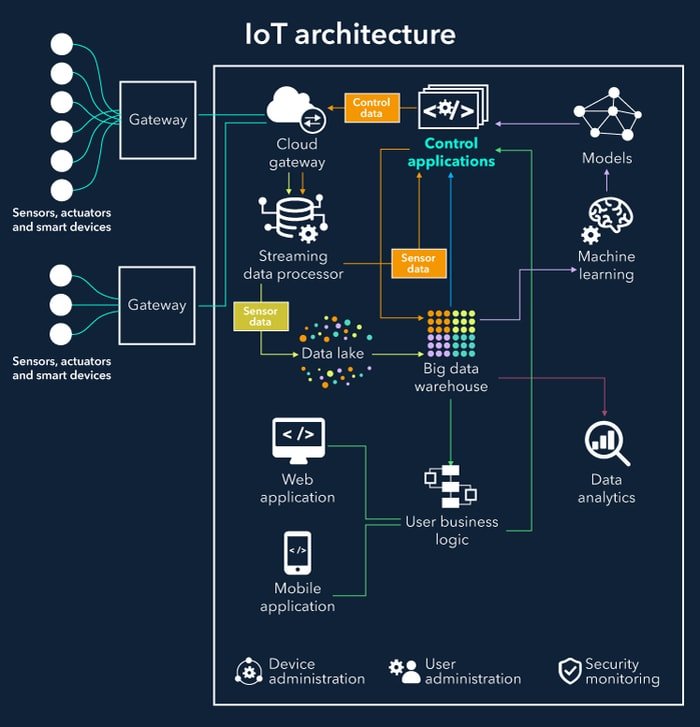 The system automatically prescribed the medicine for the normal scenario. If the health condition is critical, then it passes the notification to the concerned personnel. By this way, it reduces the rate of admission to the hospital. The systems work with various stakeholders such as:
The system automatically prescribed the medicine for the normal scenario. If the health condition is critical, then it passes the notification to the concerned personnel. By this way, it reduces the rate of admission to the hospital. The systems work with various stakeholders such as:
IoT Works for Patients
The term “IoT for Patients” may be wrong with this example. If for all human beings. The IoT Platform is connected with different systems. The individual will wear different healthcare IoT devices like IoT enabled hand band, smartwatch, Sphygmomanometer, heart rate monitoring cuffs, and similar types of devices in this system.
The individual’s personal data is already stored in cloud storage. The screen will show you the required medicine if the symptoms are predefined. Otherwise, the concerned doctor will suggest the medication through a computer screen.
IoT Works for Doctors
IoT in healthcare also counted as a vital player in IoMT. In the system, doctors are connected with the cloud network. They instantly get the updates of the patient and become mentally prepared for medicine recommendations. If the situation is beyond the control through meditation, their requirement ambulance service can bring the patient to the hospital through an automatic system.
This is a win-win system because the doctor became more relaxed, and the cost of medication for the patient has reduced. More doctors can go over the best medication for the patient by getting data earlier from the IoMT system.
IoT Works for Hospital
The hospitals are the ultimate patrons of the IoT healthcare system. Hospitals are investing a lot in developing IoMT. They took part in research, invested in infrastructure, employed the IoT software developer, and managed the overall IoT medication systems.
Hospitals are connected with doctors, patience, ambulance service, wheelchair, nebulizer oxygen Pumps, and other monitoring systems. They are the real entrepreneurs of IoT in healthcare.
IoT Works for Healthcare Insurance
For the healthcare insurance company, the internet of health things is essential. Insurance companies can collect data easily from the system of their clients. They are also connected with different healthcare devices. Dost devices pass information to the medical insurance company. So the chances of reliance are very low on the internet of medical things.
Insurance companies also investing and motivating clients to use the IoT in the healthcare system. In this way, healthcare IoT insurance the transparency of IoT medication systems. It reduces the claims to a remarkable percentage. On the other hand, IoT device is also capable of validating clients’ claims to the insurance companies.
The Benefit of IoT in Healthcare
It is not required to tell much more about the benefits of the IoT system. It minimizes the gathering of patients to the hospital. At the same time, it reduces the checkup and diagnosis cost of that patient. Because of IoMT president visit the chamber of doctor virtually when it is required.
Now I am telling some benefits of IoT in healthcare. The IoT protocols are designed in such a way that you need not tell on your emergency. The system will direct you to the required action.
Simultaneously Monitoring and Checking
The Internet of medical things allows its users to do all medical activities simultaneously. In a medical emergency, the physician will collect your data from cloud storage software.
Before reaching the hospital, your bed, nurse, and doctor will be ready. You need not waste your money and time on disease diagnosis repetitively. The report will be ready before you reach the hospital. Some smart IoT devices already sent the data earlier.
Healthcare devices of IoT collect and transfer data. The IoMT devices may be used for measuring blood pressure, heartbeat, and other critical systems. It continuously transmits the data in real-time that makes the decision-making process easier.
The research report of “Center for Connected Health Policy” tells that because of IoMT, people can reduce 50 percent treatment cost. Fossguru team also thinks that IoT applications in healthcare make our life more comfortable.
End-to-End Affordability and Connectivity
IoMT connects doctors, hospitals, and patients with next-gen healthcare technology. IoT in healthcare also connects humans to devices, devices to cloud networks, cloud server hospital databases, and finally, hospital to ambulance service, doctors, and other peripheral IoT systems. Buy different IoT operating systems (IoT OS) and protocols it interconnects with each other. As a result, the cost of visiting doctors, medicines, etc., has reduced to remarkable points.
Data Analysis and Research
Every moment, a vast amount of data is transferring through the healthcare IoT systems. In general systems, all data are used for static purposes. By the advantage of IoMT is preserved in a cloud computing server even though IoT in healthcare preserved the data at more than one server or device.
The order tracking and reporting systems analyze those data and provide reports. Because of the internet of things conducting research became easier. Moreover, the healthcare organization became more efficient in providing the decision.
Live Tracking and Alert
The Internet of things works for real-time data. The IoT smart healthcare system transfers the data in real-time. In the IoT healthcare system, everything is said based on a different logic. If the blood pressure and heartbeat are below or above the normal ratio, the accountant will get a notification. If the situation is out of control over the telephone or prescription, there will be alerts for constant personal like ambulance service, hospital beds, wheelchairs, nurses, and doctors. IoT in healthcare systems tells automatically what to do at which time.
Remote Medical Assistance
In IoMT, remote medical assistance is like a telemedicine service. Suppose your doctor is out of network. According to the scenario of your health condition, the system identifies your problems. The system will order medicine automatically to the pharmacy. There are lots of healthcare chain medical services interconnected to your devices. If you can use a smart mobile phone, you can get the medication at your house.
What is IoMT
IoMT is the internet of medical things that are healthcare IoT systems. It is the collection of various medical applications, medical devices, and hospital management systems together. The medical appliance is connected with any IoT router with four different IoT protocols. Actually, there is no major difference between IoMT, IoT healthcare systems, smart health systems, medical IoT, and the internet of things healthcare.
Examples of IoMT are remote patient monitoring systems, mHealth, tracking patient medication, and smart healthcare services. At present, we are using a telemedicine service. Implementing artificial intelligence and machine learning with the internet does the telemedicine service into the internet of medical things. In the IoMT, data security is a sensitive issue because of the privacy of the patients’ personal data.
Applications of IoT in Healthcare
There are lots of applications of IoT in healthcare systems. The technologist is trying to implement more for the critical organ of the human body. That trying to make IoMT like a human brain. The human brain transfers the signal using neural networks and the internet of things, and medical services transfer the data to the concerned hospital, ambulance service, and personal. Day by Day, the utilization of IoT in healthcare is increasing. Here we are describing 20 applications of IoT in healthcare.
1. Remote Patient Monitoring
Internet of things can be applied to the patient for monitoring from outside of the hospital. Suppose the surgical patient is required to admit them at the post-surgical unit. When the danger is over is shifted to another bed of that hospital. Remote patient monitoring can solve this problem by sending the patient to their respective house.
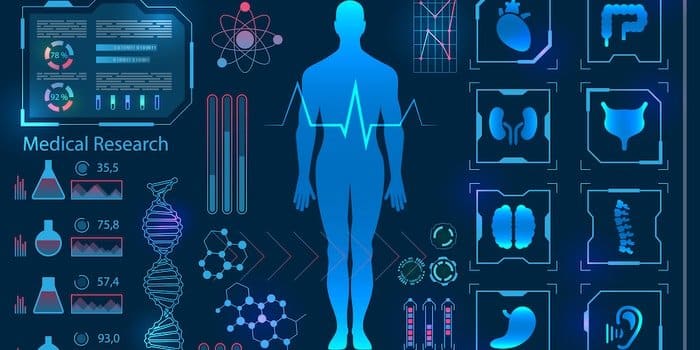 The patient will be monitored by embedded chips and sensors. IoT-enabled smart healthcare devices will collect the information in real-time and send them to the respective doctor. The doctor will suggest, recommend and prescribe the required action. 40% of the patient can be diverted by the benevolence of IoT healthcare. It will contribute to the economy by saving money. There will be many other benefits which are given in points form.
The patient will be monitored by embedded chips and sensors. IoT-enabled smart healthcare devices will collect the information in real-time and send them to the respective doctor. The doctor will suggest, recommend and prescribe the required action. 40% of the patient can be diverted by the benevolence of IoT healthcare. It will contribute to the economy by saving money. There will be many other benefits which are given in points form.
Other Benefits
- The remote patient monitoring or RPM allows the patient to stay at home and get to the hospital facility.
- It provides better access to healthcare to improve the quality of care, peace of mind, and daily assurance.
- RPM improves the support of healthcare.
It transmits data to the doctor, so it does not require visiting a doctor frequently. - The meaning of RPM is the availability of the doctor always.
It has reduced hospitalization and cost radically.
2. ADAMM Asthma Monitor
Most asthma patients cannot recognize their health condition before being attacked. ADAMM Asthma monitor is an IoT healthcare product that recognizes the symptoms earlier. It is a wearable patch-type IoT device that can detect and recognize the symptoms of your disease. The major functions include tracking the cough rate, the body’s temperature, heartbeat, and the symptom of asthma.
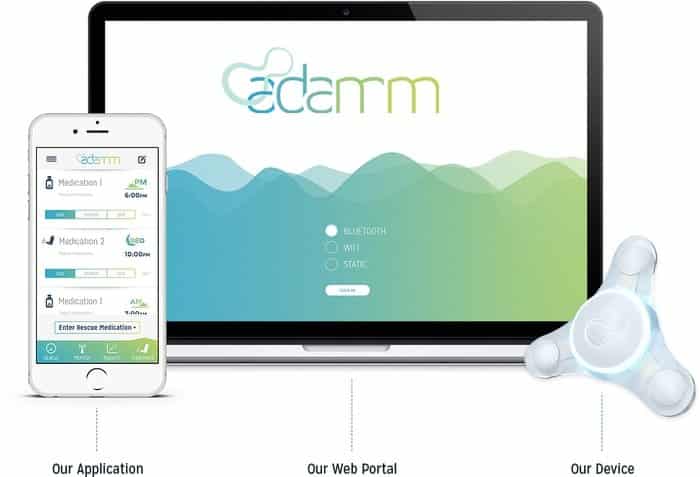 The algorithm of this ADAMM Asthma monitor is set so that it understands the normal condition of your health. When it finds some symptoms of being attacked by asthma, it notifies you and the health clinic. It collaborates with various portals, mobile applications, and forums to get various data and treatment plans. The voice journaling feature of this smart device records the patient’s findings and can transmit them to the doctor.
The algorithm of this ADAMM Asthma monitor is set so that it understands the normal condition of your health. When it finds some symptoms of being attacked by asthma, it notifies you and the health clinic. It collaborates with various portals, mobile applications, and forums to get various data and treatment plans. The voice journaling feature of this smart device records the patient’s findings and can transmit them to the doctor.
3. Apple’s ResearchKit and Parkinson’s Disease
In the year 2018, Apple introduced a new API named “Movement Disorder API”. It is an open-source responsible used for Parkinson’s Disease. Generally, doctors manage the patient and keep the physical note. But this API aims to take the symptoms digitally frequently. This API will run by a smartphone application. The connected iPhone app then shows the data on the graph. The iPhone app is integrated with healthcare IoT systems. So that the doctors can get minute-by-minute updates.
4. Blood Coagulation Testing
IoT applications in healthcare have a tremendous contribution to every sector of health. Blood Coagulation testing using IoT is one of them. It is a Bluetooth technology that is connected with the internet of healthy things. A standard blood clot level is required for a healthy life. It is required to know the blood clot level for the main types of patients. Internet of health things can take the responsibility to report the condition of blood clot level from time to time. This IoT healthcare system reduces the possibility of stroke, bleeding, and many other risks for patients.
5. IoMT in Hospital Operations Management
IoMT Increases the efficiency of hospitals. Here we want to focus more on IoT security systems than the internet of medical things. Because the products of IoT healthcare are mass more valuable since the doctors and other authorities are busy, there may be a chance of mishandling the devices. Moreover, the smart notifications systems inform the hospital authority to track the device location and the purpose of using that. IoT application of healthcare also dictates the cleanliness of hospitals, the current location of doctors, ambulance service, and even the patients.
6. Glucose Monitoring Using IoT Smartcare
Glucose is widely used for diabetes patients. We all know that diabetes is a chronic disease and many families have this patient. The smart glucose monitoring system can be your best friend if you are a diabetes patient. It takes the data from you and sends it to the IoT healthcare systems. At the opposite end, the doctor will analyze your report and prescribe medicine. Since it is a common disease and technology is helping you. Therefore, you are not required to visit a doctor for diabetes consultancy. Your diabetes report doctor will suggest the medicine from his chamber, and you will get the treatment in your room.
7. The Apple Watch App to Monitor Depression
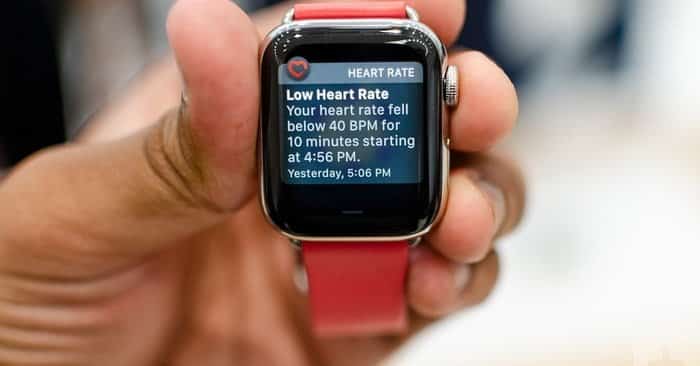 This depression monitoring tool is a behavioral healthcare system. The depression monitoring Apple watch is a common tool for all. You need not be required to become patient for wearing this device. This device will detect the level of depression. It does this job using artificial intelligence and machine learning. The research is already proved the performance of the Apple Watch app for monitoring depression.
This depression monitoring tool is a behavioral healthcare system. The depression monitoring Apple watch is a common tool for all. You need not be required to become patient for wearing this device. This device will detect the level of depression. It does this job using artificial intelligence and machine learning. The research is already proved the performance of the Apple Watch app for monitoring depression.
8. Connected contact Lenses
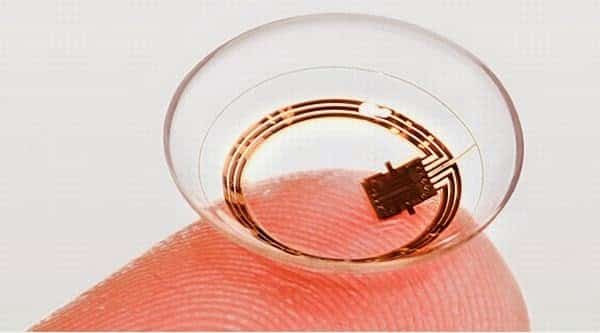 Another IoT healthcare example is connected to contact lenses. This IoT healthcare application may seem to be highly ambitious. But it is happening in the real world. The eye is the most valuable organ of human life. The Connected contact lenses are put on your eyes and connected through an IoT sensor. It will be able to transmit the conditions of your eyes and diseases add other symptoms. Moreover, it will detect the changing the size of the eyeball, tear level of eyes, and other functions.
Another IoT healthcare example is connected to contact lenses. This IoT healthcare application may seem to be highly ambitious. But it is happening in the real world. The eye is the most valuable organ of human life. The Connected contact lenses are put on your eyes and connected through an IoT sensor. It will be able to transmit the conditions of your eyes and diseases add other symptoms. Moreover, it will detect the changing the size of the eyeball, tear level of eyes, and other functions.
9. IoT in Healthcare: Connected Inhaler
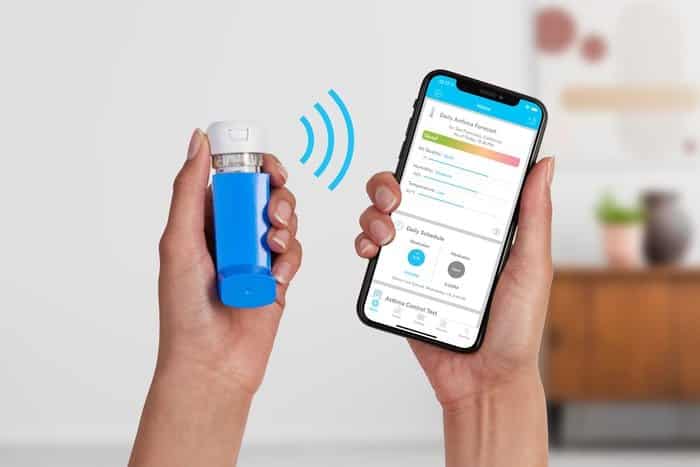 IoT in healthcare also reached up to the device inhaler. The smart IoT connected inhaler can gather the required data, analyze it forms a cloud network, and provides a report. You can take medicine on your own. On the other hand, the report will also be sent to your doctor. The doctor will recommend the prescribed medicine from his chamber, and you will get the meditation from your home. This medical IoT application is very accurate, and it will reduce hospitalization costs.
IoT in healthcare also reached up to the device inhaler. The smart IoT connected inhaler can gather the required data, analyze it forms a cloud network, and provides a report. You can take medicine on your own. On the other hand, the report will also be sent to your doctor. The doctor will recommend the prescribed medicine from his chamber, and you will get the meditation from your home. This medical IoT application is very accurate, and it will reduce hospitalization costs.
10. Nurse Assistant Robot
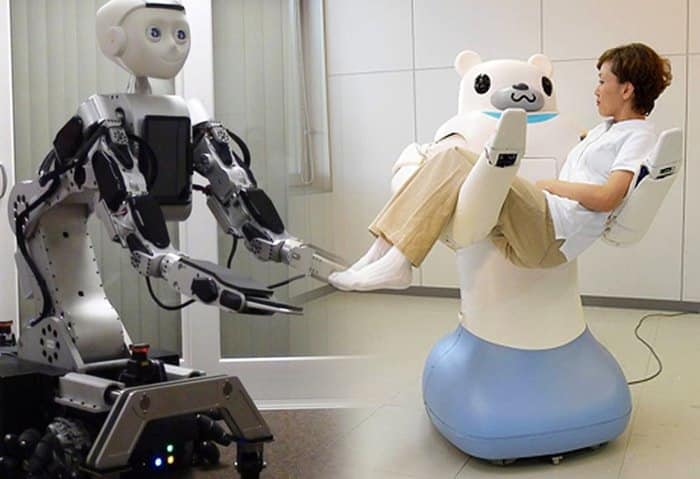 The development of robotic engineering reached such a way that it can be implemented in healthcare IoT. Here the robots will not suggest any medicine. It will just work as assistance. But it can be another IoT in healthcare examples. In the IoMT system, the nurse knows very well which medicine is to apply to which patients. She will send the medicine to the bed of patients by a truck running robot. We already have seen that robots are working at a restaurant. In the hospital, the robot will work in the same way.
The development of robotic engineering reached such a way that it can be implemented in healthcare IoT. Here the robots will not suggest any medicine. It will just work as assistance. But it can be another IoT in healthcare examples. In the IoMT system, the nurse knows very well which medicine is to apply to which patients. She will send the medicine to the bed of patients by a truck running robot. We already have seen that robots are working at a restaurant. In the hospital, the robot will work in the same way.
11. Robotic Surgery
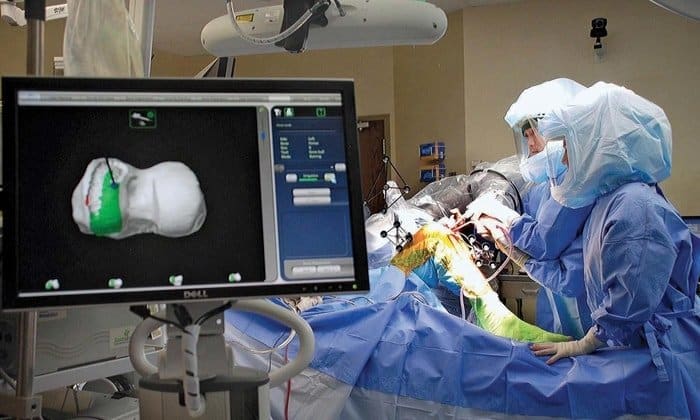 Another smart healthcare devices are Robot. It can perform the job of surgery like a human. There are many organs of the body where is inaccessible by human beings. But the doctor’s surgery the operation by those robotic devices. If it is connected with the internet of things, then the more experienced consultant can provide direction from anywhere in the world. Many critical operations are done by robots. Some IoT-enabled hospitals already integrated the surgical system with the robots. Now robots are more accurate than humans.
Another smart healthcare devices are Robot. It can perform the job of surgery like a human. There are many organs of the body where is inaccessible by human beings. But the doctor’s surgery the operation by those robotic devices. If it is connected with the internet of things, then the more experienced consultant can provide direction from anywhere in the world. Many critical operations are done by robots. Some IoT-enabled hospitals already integrated the surgical system with the robots. Now robots are more accurate than humans.
12. Hand Hygiene Monitoring
We will not focus on Hand Hygiene Monitoring as the application of IoT healthcare systems. It is basically a home-based IoT system. It is a smart kitchen or washroom appliance. Washing hands is very common to all. But it is essential to the hospitals. Before dealing with anyone at a hospital, a clean hand is must be required. In the smart healthcare application, it also can be incorporated. The IoT device will detect the germs in your hand and suggest rewashing them.
13. Body Scanning
Body Scanning is an old terminology to medical science. But, definitely, it is costly. IoT can reduce the cost if IoT is applied to the Body Scanning machine. It automatically captures the image of your body with a 360-degree camera. With the smart app, you can connect to the device and get the report directly. It can maintain a database based on the finding of your body and send to the doctor. After the frequent checkup, it will work as artificial intelligence. Then if any irregularity is found, it will send the notification.
14. IoT Smart Healthcare: Interoperability
Your data is an asset to someone. The Future of IoT Healthcare depends on the data. There are many organizations to collect your health data for further research. They will make a new IoT project with the data. The combination of big data makes an accurate research report. The well-organized medical research report will contribute more to the next-gen IoT health solutions.
15. Ingestible Sensors
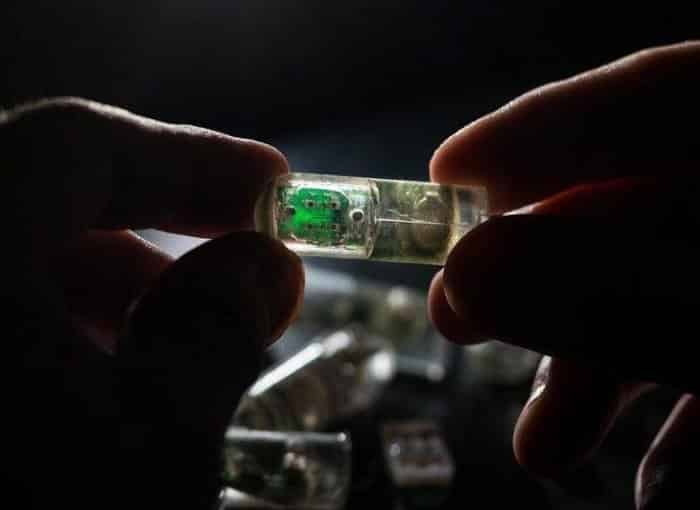 IoT has reached up to the stomach of the human body. The Ingestible sensors are pill-sized electronic devices that can sense various scenarios of the human body. Suppose you forgot to take medicine, then it will transmit the message to your family members that you did not take medicine. It can reduce the pressure of remembering the medicine taking time, cost-effective, and is good for your mental health.
IoT has reached up to the stomach of the human body. The Ingestible sensors are pill-sized electronic devices that can sense various scenarios of the human body. Suppose you forgot to take medicine, then it will transmit the message to your family members that you did not take medicine. It can reduce the pressure of remembering the medicine taking time, cost-effective, and is good for your mental health.
16. IoT Smart Healthcare: Hearing Aid
In smart healthcare, IoT has also contributed to hearing aid. Suppose someone can not hear. On hid door there is his guest. Now IoT devices will provide some signal to open the door. If you are out of your house, you can control your light, fan, and TV over the voice command. In a noisy environment, you can use the IoT hearing device for better performance.
17. Heart Rate Monitoring
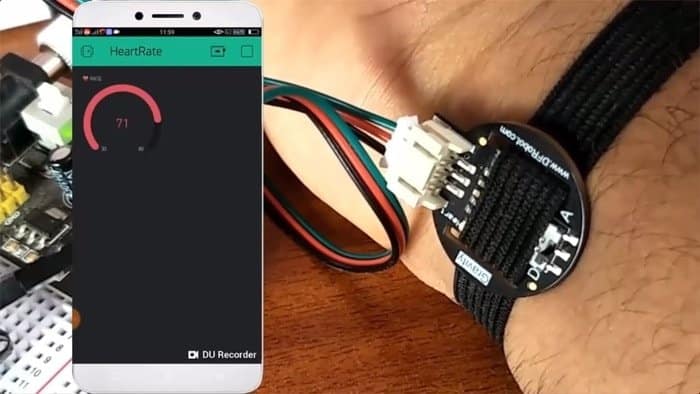 Another major example of IoT applications in healthcare is Heart Rate Monitoring. With this internet of medical things, you can make your bedroom an ICU. The heart rate reader is connected with the patient. It will transmit the data to any designated cloud server. The embedded system will notify you of the required action. The copy of the report will also transfer to the doctor digitally. It automatically orders everything if an emergency arises.
Another major example of IoT applications in healthcare is Heart Rate Monitoring. With this internet of medical things, you can make your bedroom an ICU. The heart rate reader is connected with the patient. It will transmit the data to any designated cloud server. The embedded system will notify you of the required action. The copy of the report will also transfer to the doctor digitally. It automatically orders everything if an emergency arises.
18. Cancer Detection by IoT Devices
IoT can detect many things in the human body. Cancer diseases are one of them. Using various modernized healthcare devices, it can detect the condition of health. Moreover, it can detect breast cancer in women more accurately. With the combination of machine learning and artificial intelligence, it has developed such a wonderful invention. Besides cancer detection, it also can transfer the live data to the concerned personnel.
19. Parkinson Patient Monitoring
Parkinson’s disease is a nervous system that affects normal movement. Smart IoT healthcare also develops a system to solve the problem. The system automatically tracks the footstep, behavior, and movement. It continuous analysis of the pattern of patience and provide a recommendation. It is a promising healthcare solution for IoT.
20. Efficient Drug Management
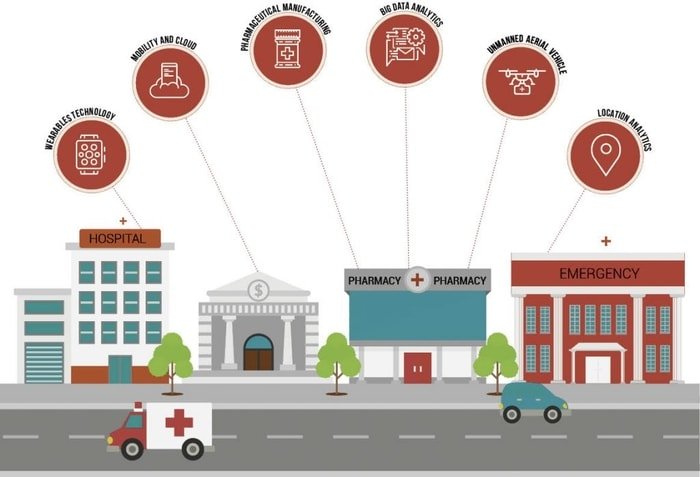 IoT can also contribute to efficient drug management. This process can be done by customer relationship management (CRM software). It is just like supply chain management. The medicine supply system can be the best example of this IoT system. Each of a lot of medicine is calculated by RFID systems. If there is any shortage of medicine, it automatically sends a message to the vendors that the hospital requires that medicine.
IoT can also contribute to efficient drug management. This process can be done by customer relationship management (CRM software). It is just like supply chain management. The medicine supply system can be the best example of this IoT system. Each of a lot of medicine is calculated by RFID systems. If there is any shortage of medicine, it automatically sends a message to the vendors that the hospital requires that medicine.
Final Thought
IoT in healthcare has reached all sectors of health. It has managed the collaboration with human organs with technology. Now because of the smart application of healthcare, everything is automated. All the systems are compiled so that it has developed a well-combined Internet of medical things or IoMT. We have tried to discuss various IoT applications in healthcare. We want to write more if you suggest your thinking. Your valuable comments are inspiring. Please share if you like this article.




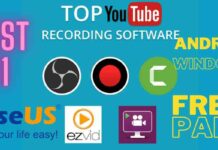
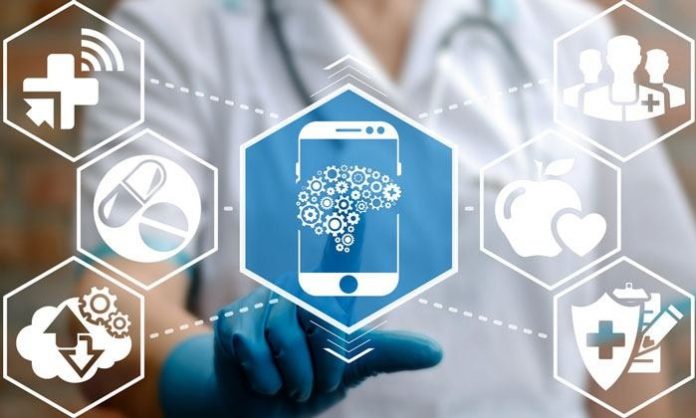
this proposal send kor